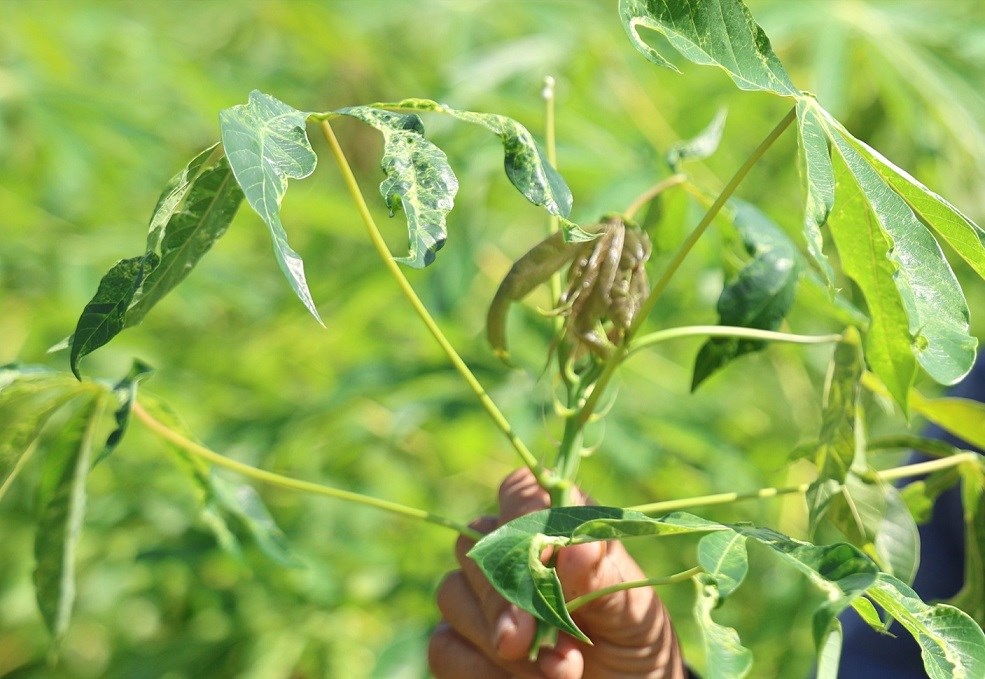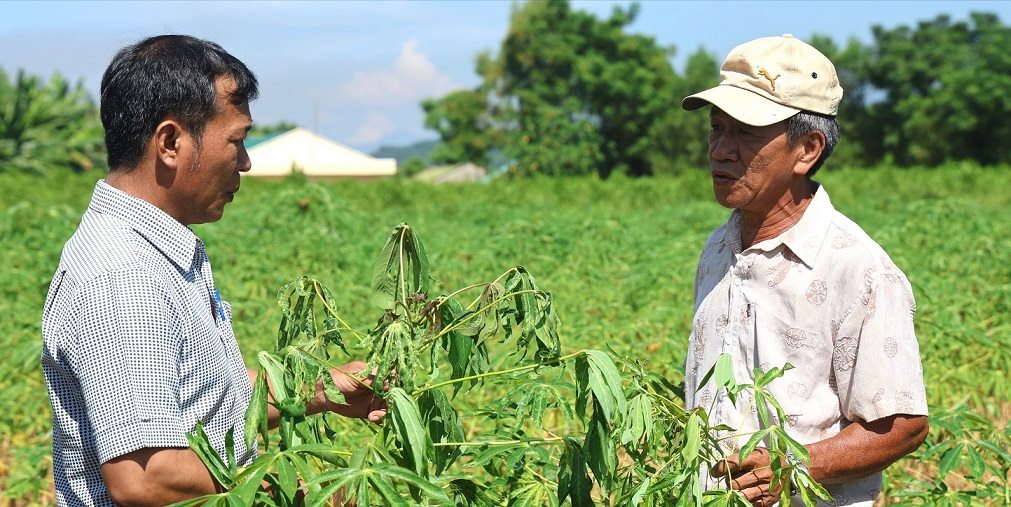Key crops lose crop
In the 2024 - 2025 crop year, the whole province planted more than 45,000 hectares of cassava with main varieties such as KM94, KM95, KM419, HN3, HN5 ... Currently, the cassava tree is in the stage of developing trunks, leaves and roots. According to statistics, more than 7,100 hectares of noodles in the province are infected with the leaf decay virus at different levels, of which more than 6,320 hectares are severely infected.
The leaf- decay epidemic is rampant on cassava trees, especially in mountainous communes of Quang Ngai, causing many farming households to worry. Mr. Dinh Van Lanh, in Son Thuy commune, said: "2,500m2 of the family's noodles are in the stage of development, forming bulbs, but the epidemic of bandits and leaves has caused the leaves to meet and the body to be hoarded. This disease will definitely cause crops to fail.

Sharing the same concern as Mr. Lanh, this year's noodle crop, Ms. Dinh Thi Tinh, in Son Ha commune, grows about 4,000m2 of noodles. However, due to the impact of leaf decay, the noodles are slow to grow, with few and small roots. A few years ago, thanks to noodles, my family's life was less difficult. This year, if the trees are sick like this, not only will they not earn much but there is also a risk of both labor and capital loss.
According to statistics, in Son Linh, Son Thuy, Son Ky and Son Ha communes, more than 5,560 hectares of noodles are currently infected with serious leaf decay. In particular, in Son Ha commune, over 1,500 hectares of noodles are sick, accounting for more than 95% of the total area of noodles in the commune.
Mr. Nguyen Tung Son - Vice Chairman of Son Ha Commune People's Committee said that cassava is still the main crop, playing an important role in poverty reduction for ethnic minorities. However, since the outbreak of green rice leaf disease, the productivity of cassava has decreased, and people's lives have been significantly affected.
In the coming time, the commune will implement solutions to both ensure economic efficiency and maintain crop productivity, and at the same time recommend superiors to support clean noodles or suitable replacement crops for farmers to regenerate on areas affected by the disease.

No specific drugs yet
The agricultural sector has issued documents directing localities to strengthen propaganda and instruct farmers to apply care and fertilizer measures to improve the resistance of cassava plants and limit the spread of diseases.
Mr. Bui Duc Trung - Deputy Head of the Provincial Department of Crop Production and Plant Protection said that the disease of mongol leaves caused by white pollen insects as a disease transmission medium, combined with people using seeds that have been infected for the next crop, caused the epidemic to spread.
This is a dangerous disease, there is currently no specific treatment, so if not treated promptly, it will be very difficult to control. To effectively prevent the disease, the agricultural sector recommends that farmers absolutely do not eat rice seeds from infected areas; prioritize growing clean, disease-resistant noodles. At the same time, regularly check the fields, promptly detect and destroy disease plants; spray white pollen pesticides; fertilize in moderation and enough for the plants to grow healthily and increase resistance.
According to Mr. Bui Duc Trung, in areas with severe infections, it is necessary to develop a plan to switch to other crops such as corn, beans... suitable for each foot of the land to cut down the source of infection. With areas that are often infected but difficult to convert, it is recommended to temporarily stop production in one crop to eliminate pathogens. In the context of limited clean seed sources, promoting the conversion to other crops is considered a practical solution to reduce epidemic pressure and improve production efficiency.











